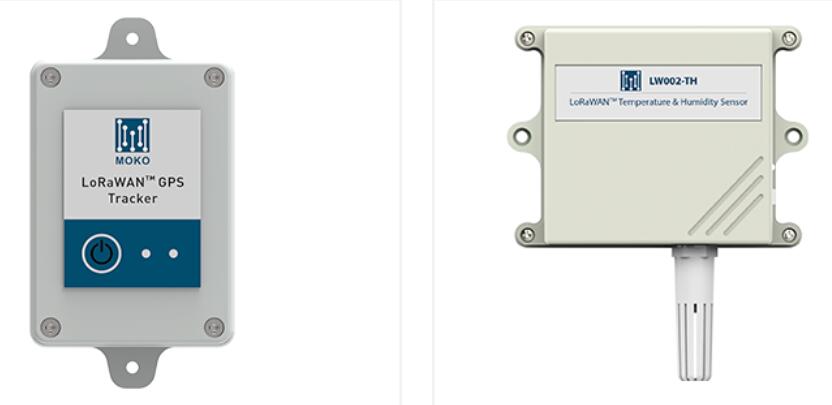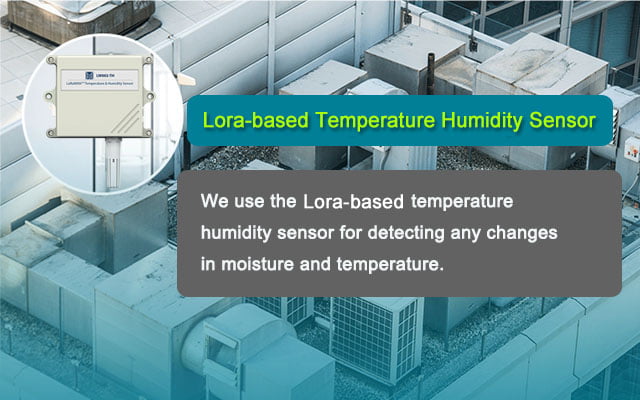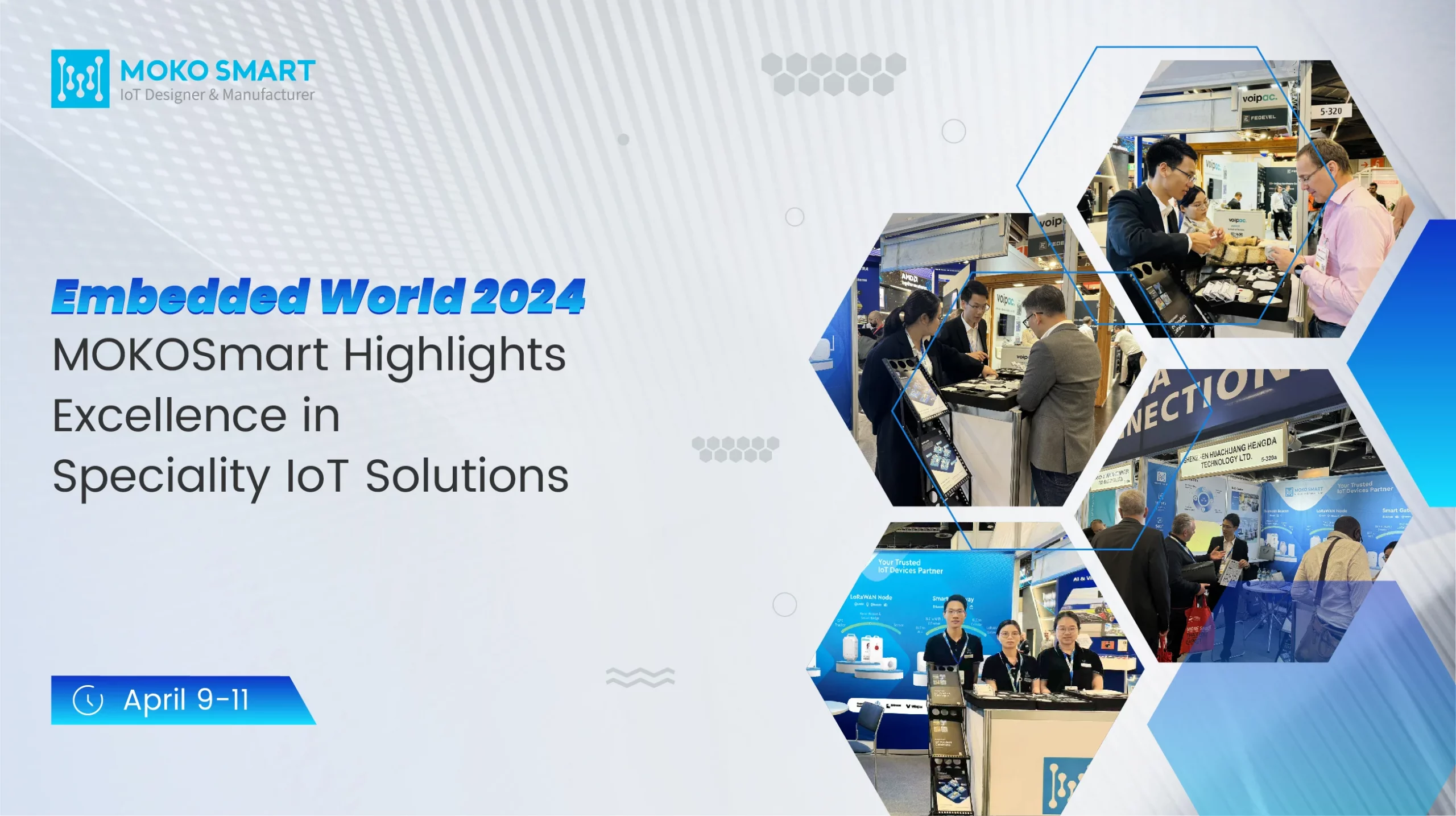LoRaWAN温度湿度センサーを使用して、湿気と温度の変化を検出します. 次に、これらの変更をLoRaWANゲートウェイに報告します. そう, the LoRaWAN gateway transmits this data to the cloud. したがって, we can see this information by accessing it through a smart device and therefore we can use it as per our needs. We typically use such temperature humidity sensor in various industries and in remote environments. A LoRaWAN temperature and humidity sensor don’t consume too much power. したがって, they are not only economical but also very efficient. 記事上で, we will tell you all that you need to know about the LoRaWAN温度湿度センサー.
Working Process of LoRaWAN Temperature and Humidity Sensor
このセクションで, we discuss how temperature and humidity sensors work. したがって, the following is a description of its working.
- It includes two separate detection probes. そう, one probe is for detecting the change in the temperature. しかしながら, the second probe is for detecting the change in humidity.
- Whenever there is a change in temperature the dedicated probe is able to detect it. And this probe records this change. 同様に, any change in humidity is detected by its dedicated probe. そう, this detection is then consequently recorded.
- LoRaWAN temperature humidity sensor is often placed in remote locations where they form the LoRa nodes.
- したがって, each cluster of remote LoRa nodes is connected to a singular LoRaWAN gateway.
- A collection of LoRaWAN gateways form a LoRa network. The LoRaWAN gateways often communicate with the LoRa network through cloud computing.
- The measurements recorded by a LoRaWAN temperature humidity sensor are then converted into a LoRa signal and sent to the closest LoRaWAN gateway.
- そう, the LoRaWAN gateway then receives the LoRa signal from a LoRaWAN temperature humidity sensor. And then it transmits this signal to the dedicated IoT cloud network. From there the information is accessible to any smart device such as a PC, タブレット, 携帯電話, or laptop.
- LoRa temperature sensor is often programmable. そう, we can set its measurement frequency. This means that it takes temperature and humidity measurements after specified intervals. そう, these measurements are then transmitted to the LoRaWAN gateway and so on after fixed periods of time.
- LoRa temperature and humidity sensors consume very little power so they are very cost-effective and deliver excellent performance.
How to Interface an IoT temperature sensor?
This section is dedicated to the interfacing of the IoT temperature and humidity sensor. そう, here are the detailed steps.
- You will have to first select the temperature and humidity sensor that you want to use.
- Then you will have to use something which will convert the analog measurements recorded by these sensors into digital signals. そう, you can use a microcontroller like Arduino or Raspberry Pi for this purpose.
- しかしながら, if you use microcontrollers for the deployment of a large number of sensors then it might cost you a lot.
- After integrating the temperature or humidity sensor with the microcontroller, you will have to integrate a transmitter module. This transmitter module will send the recorded values in the form of a signal to the receiver.
- そう, you will have to then attach the receiver to a remote server. This remote server will serve as a network node.
- You will then have to seek the help of a third party to provide you cloud services. The cloud service will link the remote server with the rest of your IoT network and you can then use it as per your needs.
A Better Alternative: LoRaWAN Temperature and Humidity Sensor
しかしながら, if you use the LoRaWAN temperature humidity sensor for your IoT network then it will save you a lot of hassle. You can connect it to a LoRa node without relying on relatively expensive microcontrollers. さらに, you won’t have to use receivers and transmitters because LoRa nodes can communicate with the LoRaWAN gateways on their own. The LPWAN protocol operates on open bandwidths so you won’t need the help of a third-party service. したがって, you can easily send the data through a LoRa signal directly to your cloud server. Then you can easily access this data and analyze it for various purposes by using a computer or mobile device.
Applications of LoRaWAN Temperature Humidity Sensor
このセクションで, we will briefly look at some of the applications of the LoRaWAN temperature humidity sensor.
-
スマート農業
Large agricultural and animal farms need to closely monitor the temperature and humidity. So that they are able to better monitor their performance and favorable conditions. Sometimes farm owners have to cover vast areas so they are unable to take physically measure temperature and humidity in all locations. したがって, we can easily take temperature and humidity measurements by using LoRaWAN.
-
Monitoring of Environment Conditions
We often use wireless temperature and humidity sensor for monitoring the environmental conditions in various remote locations. These measurements will allow us to predict extreme weather and environmental conditions well in advance such as flooding.
-
スマートビルディング
It is difficult to detect internal and external environmental changes in large buildings. したがって, we can use an IoT temperature sensor for detecting any significant temperature and humidity change. This allows for better detection of extreme conditions and builds better fire alarms.
-
産業用制御
Industries rely on various manufacturing processes that involve monitoring of different parameters. Temperature and humidity are some of the most important industrial parameters. したがって, it is necessary for us to effectively measure them. A LoRaWAN temperature and humidity sensor allow for a large number of measurements and convenience to access them.
LoRaWAN Temperature Humidity Sensor By MOKOSmart

MOKOSmart is a renowned name when it comes to IoT products. Our LoRaWAN Temperature and Humidity Sensor offers support for CN470MHZ and AS923MHZ. It has an 8000mAh battery which has a lifespan of over 10 年. It allows for very accurate temperature and humidity measurements. You should contact us if you want to know more details.






























